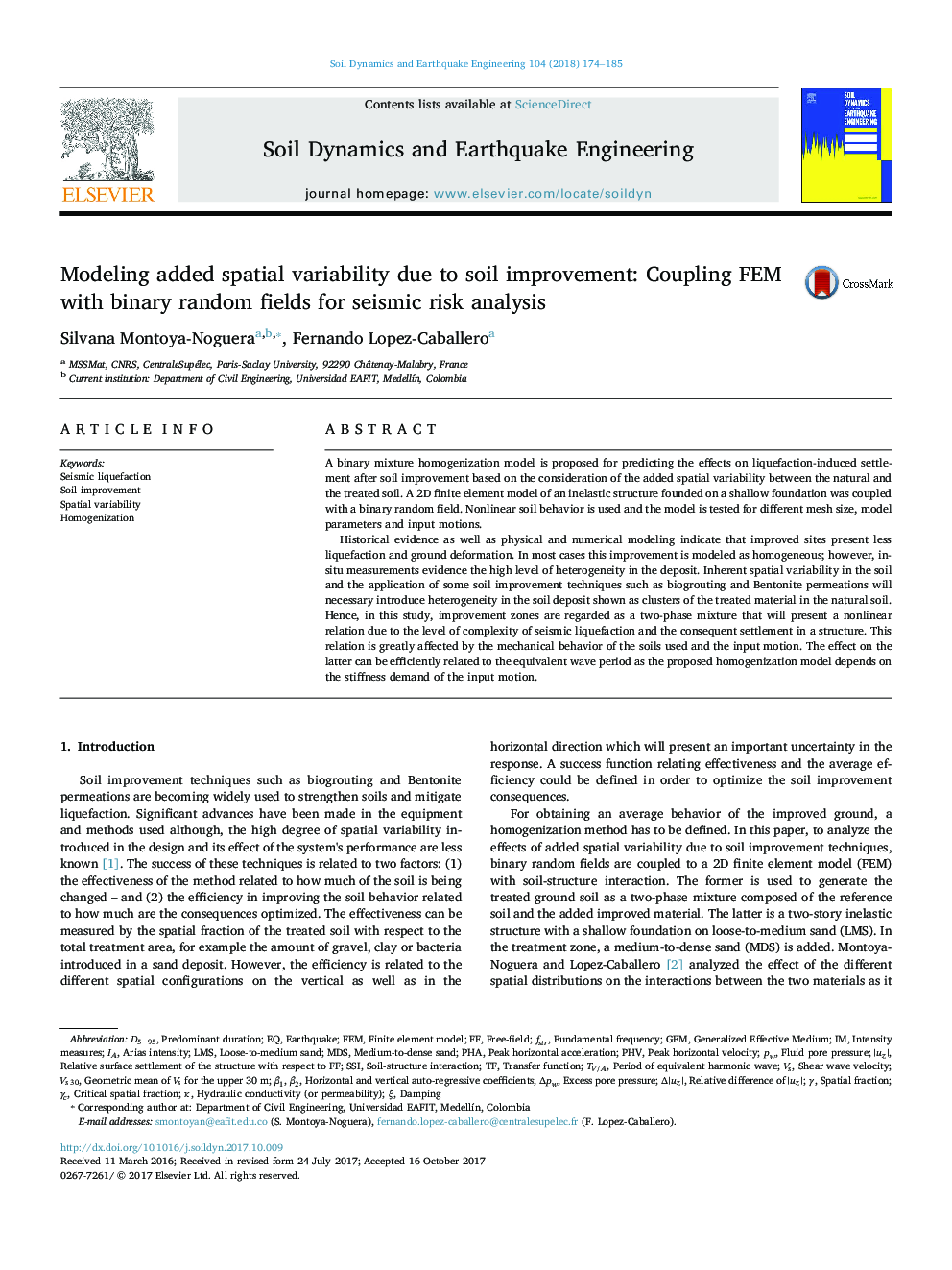| Article ID | Journal | Published Year | Pages | File Type |
|---|---|---|---|---|
| 6771007 | Soil Dynamics and Earthquake Engineering | 2018 | 12 Pages |
Abstract
Historical evidence as well as physical and numerical modeling indicate that improved sites present less liquefaction and ground deformation. In most cases this improvement is modeled as homogeneous; however, in-situ measurements evidence the high level of heterogeneity in the deposit. Inherent spatial variability in the soil and the application of some soil improvement techniques such as biogrouting and Bentonite permeations will necessary introduce heterogeneity in the soil deposit shown as clusters of the treated material in the natural soil. Hence, in this study, improvement zones are regarded as a two-phase mixture that will present a nonlinear relation due to the level of complexity of seismic liquefaction and the consequent settlement in a structure. This relation is greatly affected by the mechanical behavior of the soils used and the input motion. The effect on the latter can be efficiently related to the equivalent wave period as the proposed homogenization model depends on the stiffness demand of the input motion.
Keywords
Related Topics
Physical Sciences and Engineering
Earth and Planetary Sciences
Geotechnical Engineering and Engineering Geology
Authors
Silvana Montoya-Noguera, Fernando Lopez-Caballero,
